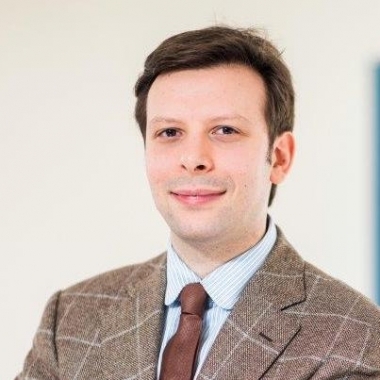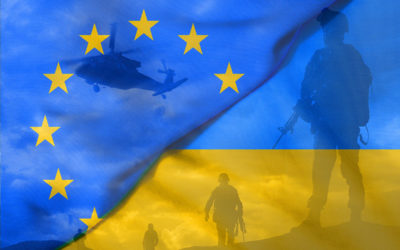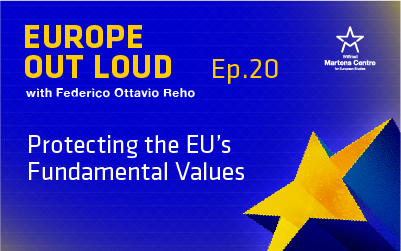Globalism and the centre-right
11 February 2020
In the last few years, a swirl of publications and initiatives have attempted to develop the doctrinal foundations of ‘trumpism’ and to offer intellectual defences of right-wing populism, that most anti-intellectual of doctrines. One way or another, they have all amounted to a variation on national conservatism, the belief that nations are our historically grown ‘homes’ and that it is therefore the primary duty of conservatives to defend their specificities from the levelling encroachment of globalisation and international institutions. According to these apologetic treatments, that’s precisely what Trump and his political mates across the globe are up to.
There has been no shortage of outraged commentaries on such takes, but they have mostly come from the liberal left. It is therefore welcome that a robust conservative and classical liberal like Dalibor Rohac – a Slovak by birth, a resident scholar at the American Enterprise Institute and a research associate at the Wilfried Martens Centre for European Studies – took up the pen to offer a powerful rebuttal from the centre-right of the political spectrum.
Rohac’s treatment is quite conventional in his belief that the current ‘globalist’ international order has coincided with an unprecedented era of peace and prosperity. This alone should enjoin those right-wingers who now want to overhaul it to show some real conservatism and pursue at most its cautious and gradual reform. However, his book departs in important ways from mainstream opinions on globalism. It understands international institutions not as top-down, enlightened bureaucracies but as bottom-up, evolutionary creations subject to constant adaptations and devised as responses to concrete challenges that transcend national borders. Such challenges include the like of trade barriers, security, pollution and the management of natural resources. For his analytical toolbox, Rohac owes an acknowledged debt to the pioneering work of Elinor and Vincent Ostrom on the governance of the commons, federalism and polycentricity. His attempt to apply the Ostroms’ principles to international cooperation and European integration is cutting-edge and fruitful.
The book also contains a very unconventional reconstruction of what the author refers to as ‘the West’s globalist history’ and I have referred to elsewhere as ‘Europe’s supranational past’. Rohac convincingly contends that ‘international’ integration, and not the national state, has been the norm for most of European history. He reflects on the historical meaning of such polycentric and multinational structures as the Holy Roman Empire, which comprised large swathes of the continent for a millennium, the Hanseatic League and, more recently, the Gold Standard, which acted in everything but name and trappings as a global currency into the 20th century. Although he stops short of openly drawing this conclusion, Rohac’s concise treatment clearly concurs with a reading of the European project as, historically, a restoration more than a radical revolutionary break with Europe’s past. This should encourage conservatives to cherish the principle of supranational integration rather more than they have done lately.
A robust conservative and classical liberal like Dalibor Rohac took up the pen to offer a powerful rebuttal from the centre-right of the political spectrum.
Rohac’s related effort to revive a tradition of internationalist conservatism inspired by the likes of Friedrich Hayek, Ludwig von Mises, Alexander Rüstow and Wilhelm Röpke also seems worthwhile and even urgent. One could add to this group of – mostly liberal – thinkers other figures such as Alexandre Marc, Denis de Rougemont, Richard Coudenhove, Otto von Habsburg and the Christian democratic founding fathers of Europe. The real question, however, is not whether conservatism and supranationalism are compatible. They are, at least since Edmund Burke wrote of the ‘commonwealth of Europe’ and Prince Metternich proclaimed ‘I have taken Europe as my fatherland’. As the author mentions, the problem is rather that there can be different forms of supranationalism, not all of them equally palatable to a christian democratic or conservative taste. Even Hayek and Röpke, who were conservative liberals, would likely have reservations about some regulatory and bureaucratic excesses of today’s EU, not to talk about the postmodernist cultural rhetoric often underpinning its policies.
To rein in the rise of national conservatism, therefore, the centre-right ought to do more than merely develop a more convincing defence of globalism and European integration. It must also articulate a meaningful reform agenda based on stronger subsidiarity, the protection of national and regional identities and a more open emphasis on the cultural foundations of European unity. The book makes some important advances in this direction, for example by insisting on the need to limit the reach of international institutions through narrower mandates, as well as to open them up to bottom-up experimentation and market incentives.
To me, the one limit of the book is the author’s embrace of a liberal internationalist – if not neoconservative – outlook, as opposed to a ‘classical’ conservative one. On the one hand, Rohac defends a polycentric interpretation of international cooperation gradually evolving by trial and error and based on institutional diversity. On the other hand, he adopts a somewhat dogmatic view of the international society that acknowledges only liberal democracies as fully legitimate actors. This contains an element of liberal messianism, is subversive of the existing international order and restricts the range of acceptable institutional diversity and experimentation.
Relatedly, the book presents a limited view of political realism and connects it with a nationalist and Hobbesian outlook: ‘realism’, writes Rohac, ‘posits the existence of self-interested sovereign nation-states as the basic units of analysis, disregarding both the rules that might constrain their behaviour as well as the various governance structures that facilitate their cooperation—providing a perfect starting point for a Trump-like doctrine of unfettered national egoism’. Although this might be a correct characterisation of the ‘structural realism’ of American scholars like Kenneth Waltz and John Mearsheimer, it leaves out the classical realist European tradition of statecraft, which had its masters in figures like Metternich and Castlereagh and more recently found an outstanding epigone in Henry Kissinger. Metternich was perhaps the main exponent of international conservatism in the 19th century, and the chief theoretician and architect of an integrated supranational governance in Europe at the time.
Arguably, this tradition has some advantages over both the structural realism of Trumpians and the liberal internationalism preferred by Rohac. Unlike structural realists, classical realists attach importance to institutions and rules. Unlike liberal internationalists, however, they understand that functioning institutions and rules cannot be designed in the abstract by enlightened planners and based on universally valid principles. They are always culturally and historically embedded. As such, they can only flourish in a specific context and gradually evolve with it. This approach seems more attune to Rohac’s own understanding of globalism as an evolving ecosystem. Combined with his highly innovative arguments, it might not only help the centre-right counter conservative nationalism with a conservative and christian democratic internationalism. It might also contribute to formulating a new EU foreign policy doctrine more adapted to the emerging multipolar (dis)order than the currently prevalent saintly visions of the EU as a ‘civilian power’.
ENJOYING THIS CONTENT?





















